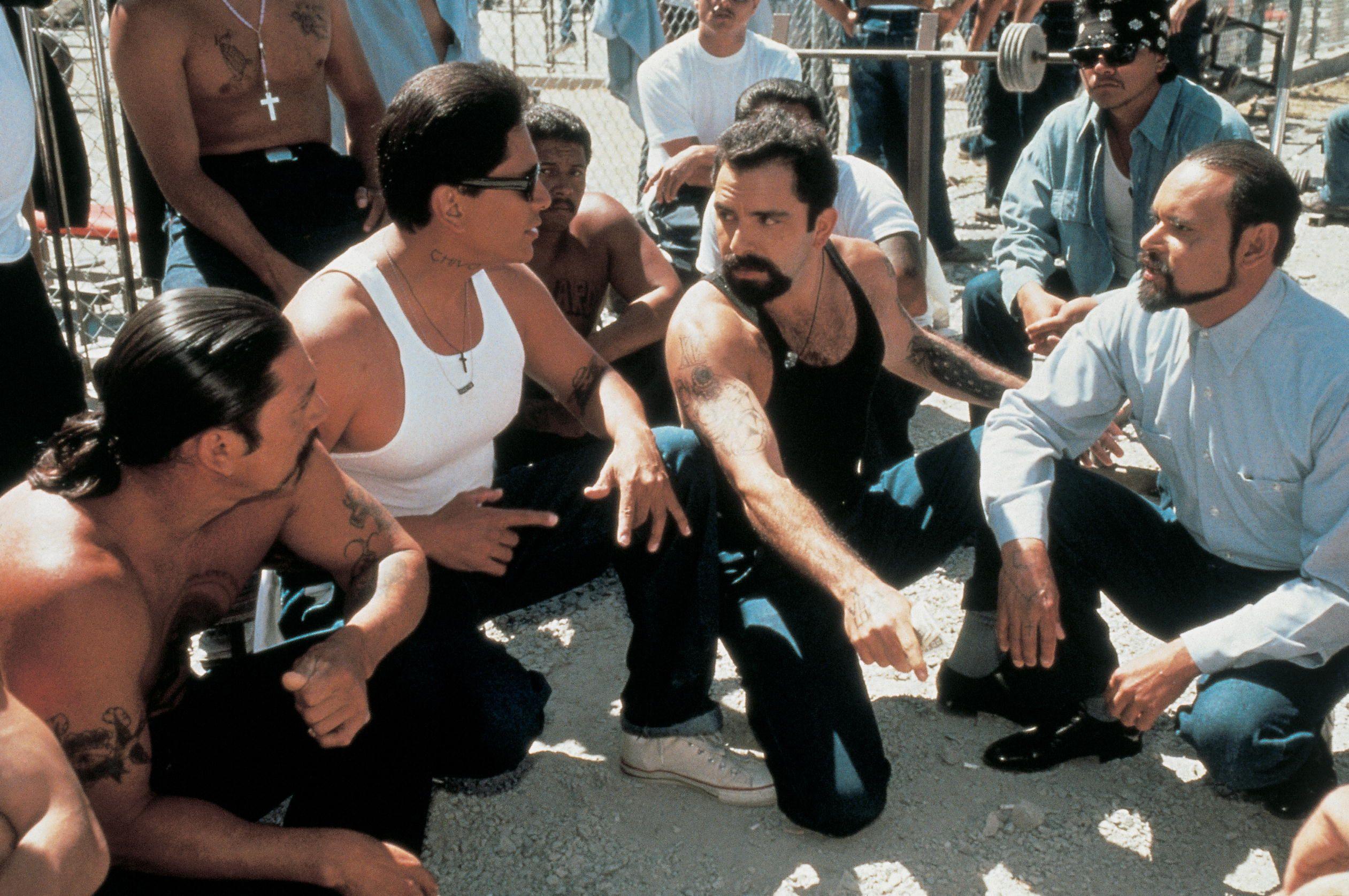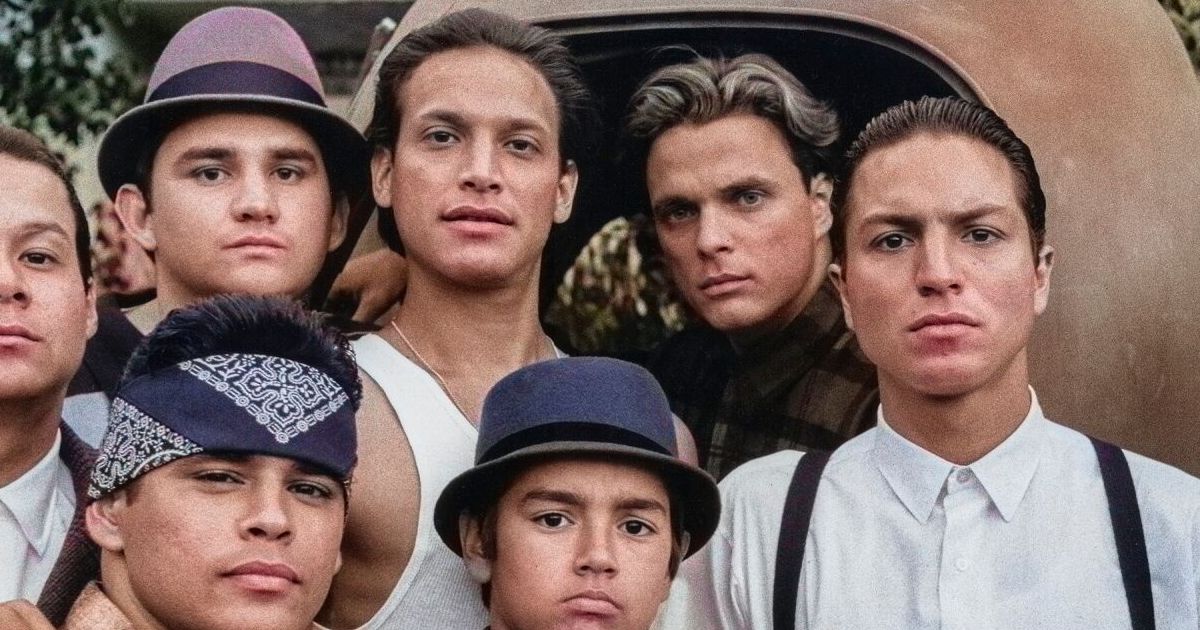Can a film, released over three decades ago, still hold a mirror to the soul of a community and resonate with audiences worldwide? The 1993 cinematic offering, "Blood In, Blood Out," not only achieves this but also stands as a testament to the enduring power of storytelling, cultural representation, and the human spirits resilience.
Set against the backdrop of East Los Angeles, the film, also known as "Bound by Honor," unfolds as a sprawling saga, delving into the lives of three Chicano relatives: Miklo, Cruz, and Paco. Their intertwined destinies, shaped by the harsh realities of street gangs, prison life, and the ever-present struggle for survival, create a narrative that is both gripping and profoundly moving. Directed by Taylor Hackford, "Blood In, Blood Out" isn't just a crime drama; it's a visceral exploration of loyalty, betrayal, and the enduring bonds of family, even amidst the most brutal circumstances. As the film turns 30, its legacy continues to grow, demonstrating its status as a cult classic.
| Characteristic | Details |
|---|---|
| Title | Blood In, Blood Out (also known as Bound by Honor and Blood In Blood Out: Bound by Honor) |
| Release Year | 1993 |
| Director | Taylor Hackford |
| Main Actors | Damian Chapa (Miklo Velka), Jesse Borrego (Cruz Candelaria), Benjamin Bratt (Paco Aguilar) |
| Setting | East Los Angeles, California and San Quentin State Prison |
| Genre | Epic Crime Drama |
| Themes | Loyalty, Betrayal, Redemption, Family, Gang Warfare, Identity |
| Based On | True life experiences of poet Jimmy Santiago Baca |
| Availability | Streaming on Hulu |
| Availability Date | May 1, 2024 |
The film's narrative structure spans from the 1970s to the 1990s, capturing the evolution of the characters' lives, from their origins as members of the street gang Vatos Locos to the unforgiving environment of prison. This timeline allows for a comprehensive portrayal of the socio-political factors shaping their choices and actions, offering a complex and nuanced understanding of their individual struggles and collective experience.
The film's authenticity is a key component of its enduring appeal. Filmed in Los Angeles and inside San Quentin State Prison, "Blood In, Blood Out" presents a raw, unvarnished depiction of Chicano culture and the challenges faced by its community. It draws upon the experiences of the community, including the true-life experiences of poet Jimmy Santiago Baca, the film offers a level of realism that sets it apart from many other crime dramas. The portrayal of gang life, the struggles for survival, and the importance of family resonate deeply with audiences who identify with the characters' experiences.
The film's cast delivers powerful performances. Damian Chapa as Miklo Velka, Jesse Borrego as Cruz Candelaria, and Benjamin Bratt as Paco Aguilar, bring depth and authenticity to their roles, each portraying a distinct personality shaped by the circumstances of their lives. Their interactions and relationships drive the narrative, allowing the audience to connect with their joys, sorrows, and ultimate destinies. The supporting cast also contributes to the film's rich tapestry, ensuring that every character feels fully realized and integral to the story.
The film's themes explore the complexities of human nature. "Blood In, Blood Out" does not shy away from the dark aspects of gang life, the consequences of violence, and the cycle of incarceration. However, it also highlights the power of loyalty, the importance of family, and the potential for redemption. The characters' choices, the challenges they face, and their ultimate fates offer valuable insights into the human condition.
- Exploring The Complex Landscape Of Donald Trumps Iq
- Unveiling The Life And Legacy Of Jason Emanuel Gould
One of the most compelling aspects of "Blood In, Blood Out" is its exploration of the concept of honor. The film presents varying perspectives on what honor means within the context of gang life and the choices individuals make to protect themselves and their loved ones. The characters' actions are driven by their internal codes of ethics, leading to moments of both triumph and tragedy. The exploration of honor, loyalty, and betrayal in this context elevates the narrative beyond the typical crime drama, transforming it into a study of moral complexity.
The film's title itself, "Blood In, Blood Out," encapsulates the central theme of commitment and sacrifice within the gang culture depicted. It represents the initiation process into the gang, symbolizing the profound level of dedication and the extreme consequences of leaving. This phrase becomes a central motif of the film, embodying the high stakes of the characters' lives and the harsh realities of their environment. The film's exploration of this commitment contributes to its emotional intensity.
The movie, which found its way to obscurity in its original release, has found a devoted following, mainly within the Latino community. Their support transformed it into a cinema cornerstone, a symbol of representation and shared cultural experiences. As a result, "Blood In, Blood Out" is now embraced as a crucial example of the Mexican experience, solidifying its status as a cult classic. Its lasting influence shows the importance of genuine storytelling and the way it can connect with diverse audiences.
The film's cinematography and direction also contribute to its impact. Taylor Hackford expertly uses visual storytelling to capture the atmosphere of the locations and the emotional states of the characters. The use of music, from the soundtrack to the score, underscores the drama and enhances the viewing experience. The visuals, combined with the performances and the storyline, create a cohesive and immersive cinematic experience.
The movie's legacy extends beyond entertainment; it has become a cultural touchstone. "Blood In, Blood Out" provides a significant contribution to cinematic representation, offering a voice to the Chicano community and their stories. This movie offers a more authentic view of gang life, which makes it stand out from others in its genre. This is because the film's themes and portrayal of gang life have solidified its status as a cult classic and have resonated with audiences for years.
The films availability on streaming platforms, such as Hulu, ensures that it can reach new generations of viewers. The accessibility of "Blood In, Blood Out" guarantees that its powerful message and compelling narrative will continue to resonate with audiences for years to come. This platform also makes it easier for both long-time fans and new viewers to explore the film, contributing to its sustained popularity and cultural relevance.
In its depiction of the street gang, Vatos Locos, "Blood In, Blood Out" presents a microcosm of society, exploring the complexities of loyalty, brotherhood, and the struggles for survival. The gang becomes a surrogate family for the characters, providing a sense of belonging, protection, and identity. However, it also exposes them to violence, danger, and the high cost of their choices.
The film's narrative arc spans a considerable timeframe, from the 1970s to the mid-1980s. This structure allows it to examine the changing social and political climate that shaped the characters' lives. The films ability to track shifts and upheavals in the context of the 1970s and 1980s adds weight to the events in the lives of the central figures.
The narrative is inspired by Jimmy Santiago Baca's life, who also helped in writing the script. This provides the film with a profound depth, adding to its storytelling, which resonates with viewers who can relate to those experiences, from the streets of Las Vegas to the harsh world of San Quentin Prison.
The enduring appeal of "Blood In, Blood Out" highlights the power of storytelling to connect with audiences on a deeply emotional level. The film's exploration of universal themes, its powerful performances, and its authentic portrayal of a specific culture have made it a timeless classic. Its themes of loyalty, betrayal, and the pursuit of redemption continue to inspire reflection and discussion.
The films impact on cinematic representation cannot be overstated. In the world of cinema, "Blood In, Blood Out" left its mark by offering a genuine portrayal of gang life and the Latino experience. This film stands out as a cultural milestone because of its lasting impact. The performances, themes, and truthful depiction of gang life have cemented its position as a cult classic. The film's ability to connect with diverse audiences speaks to its timeless appeal and enduring power.
The movie's release on Hulu, which took place in May of 2024, brought the film to a new audience, guaranteeing its availability for future viewing. This strategy also guarantees that the movie's message and narrative can be shared with more people, strengthening its position as a significant cinematic work and cultural symbol. This is why the movie is still considered a classic and remains so popular.
- Shiloh Joliepitt A Glimpse Into The Life Of A Rising Star
- Barron Trump Height Disease And Its Implications


